Northern Landscapes – Landscapes of the Flinders Ranges, Riverland and Mid North
 Landscapes of the Flinders Ranges, Riverland and Mid North by David Chalmers, Kay Bridge, Bud Stephenson, BJ Moore, Chris Alway, John Millard, Don Gangell, Harry Sherwin, Julie Hayes and Timothy Dell.
Landscapes of the Flinders Ranges, Riverland and Mid North by David Chalmers, Kay Bridge, Bud Stephenson, BJ Moore, Chris Alway, John Millard, Don Gangell, Harry Sherwin, Julie Hayes and Timothy Dell.
Exhibition runs from Thursday 9 February to Wednesday 21 March 2012
Gallery hours: every day 1 to 4 pm
NORTHERN LANDSCAPES Reviewed by “Artivist” Open the door on this hot day and be met by the airiness of a summer landscape. Many have already viewed this outstanding exhibition in Burra Regional Art Gallery, the work of ten accomplished South Australian artists. Comments in the Visitors’ Book reflect their impressions: “Stunning exhibition” (Gwenda and John), “wonderfully well done” (Brian and Pam), “extremely enjoyable (Murray and Robyn), “lovely find” (Bronwen), “very high standard of artistic accomplishment and gallery presentation” (John), “beautifully presented gorgeous ART” (Jess and Andrew), and lots more. Many of Don Gangell’s works in red oxide and violet are primal scenes of an eroded ancient land, unencumbered by humanity. The artist’s eye is evident in the detail and accuracy of the depictions, the character of the Mid North and Flinders Ranges regions evident in every textured rock, tree and mountain range.
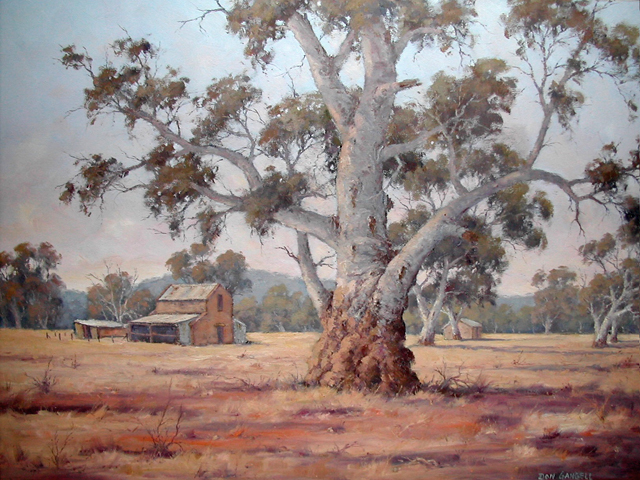
Don Gangell – Near Old Wilpena Station
Oil painting “Near Old Wilpena Station” is dominated by a massive red gum, spreading its branches all round. To the side and behind are solid farm sheds, dwarfed by the surrounding trees. Kapunda artist BJ Moore’s light-drenched works, acrylic paintings and photographs, reflect the dignity and resilience of nature.
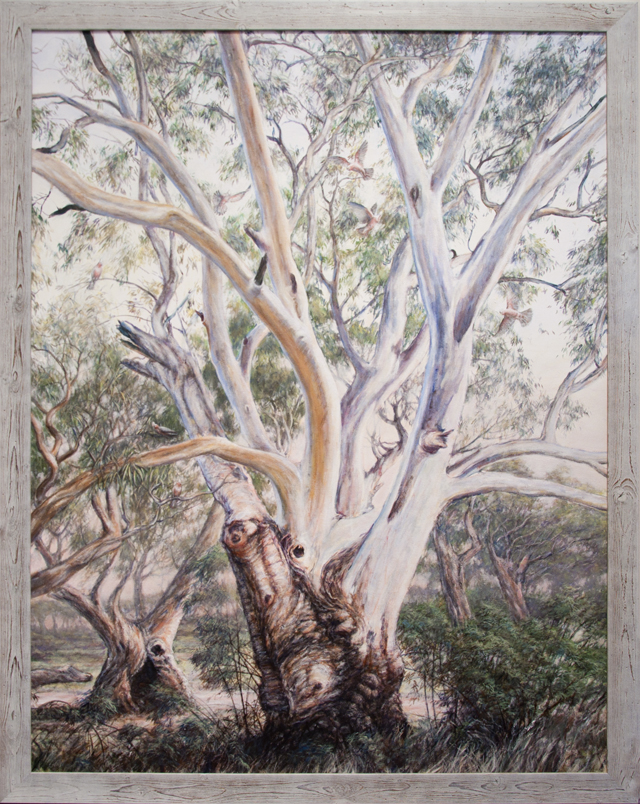
BJ Moore
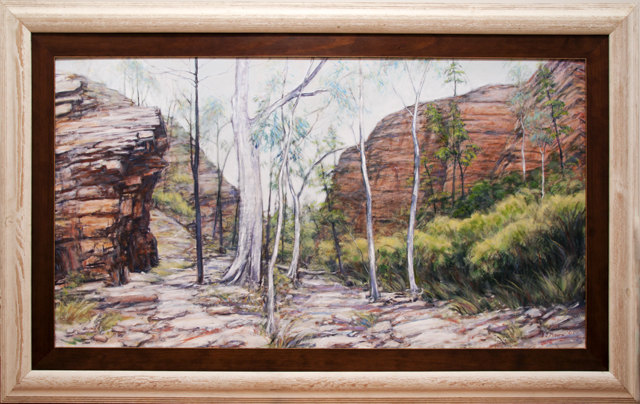
BJ Moore
“Denizen of Tweedies Gully” hangs over the mantle in the Annex, a harmonious blend of nature’s providence – but beware the barbed wire! These are painters’ paintings by an artist who likes to draw; even the photographs exhibit a love of line. Landscape art expressing reverence for the natural world encourages respect and admiration for its forms in those who regard the works.
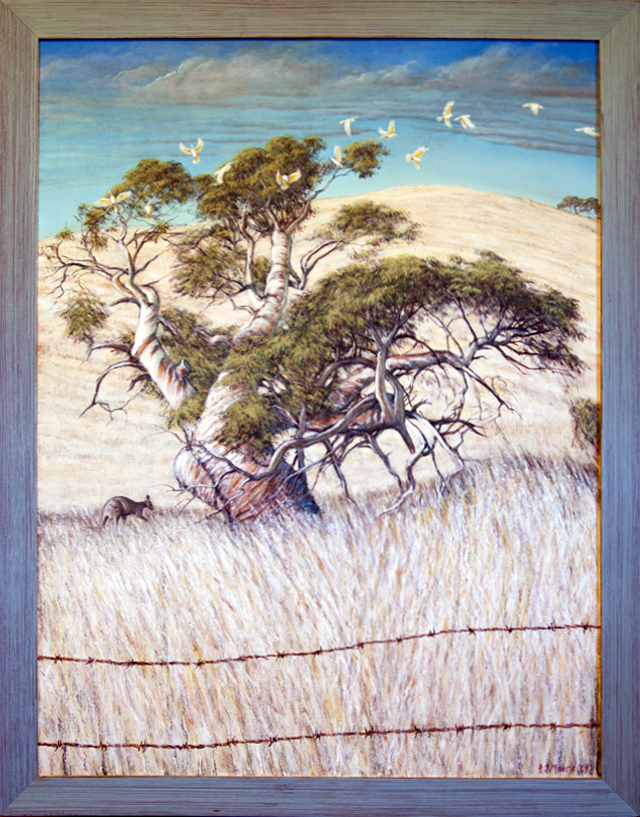
BJ Moore – Denizen of Tweedies Gully
John Millard of Crystal Brook, Chair of Painters of the Flinders Ranges and multiple prizewinner, exhibits a heartening aspect of our Mid North scenery – fence, windmill, grassy river flat with sheep or station shed.
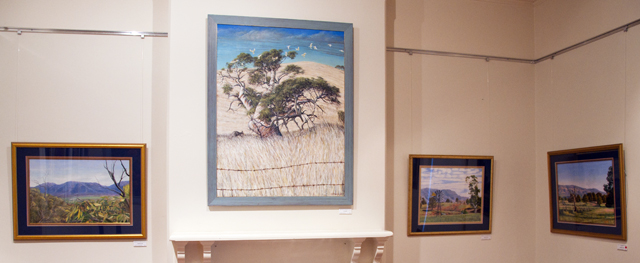
Annex – works by BJ Moore & John Millard
“The Home Paddock, Wilpena Station” shows farm structures beneath the shade of a giant gum, Salvation Jane stretching bountifully to the far reaches of the view. Management of the land becomes a clear issue when the human element is introduced. Other paintings by this prolific artist reflect a similar viewpoint.
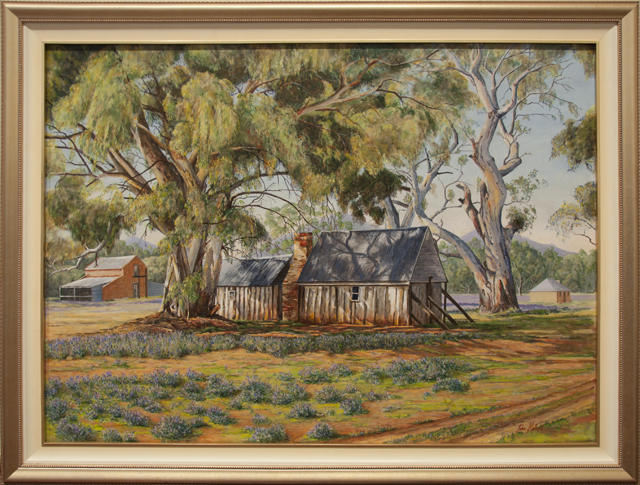
John Millard – The Home Paddock, Wilpena Station
David Chalmers, known for his watery renditions of Australia’s most essential asset, shows the enduring struggle for survival in ravishing pastels. Patterning within the landscape contrasts qualities of near and far, as in “Moralana Rocks”, highlighted by the further landscape of clouds, stretching to a metaphorical infinity. The painter’s language is put to good use with chalky marks giving a print-like quality to the works, encouraging the viewer to peer at the surface with curiosity at the wonder of it all. Kay Bridge depicts the loneliness of the outback. This piece, the pastel “Xanthorhea”, indicates strength, resilience and individuality.
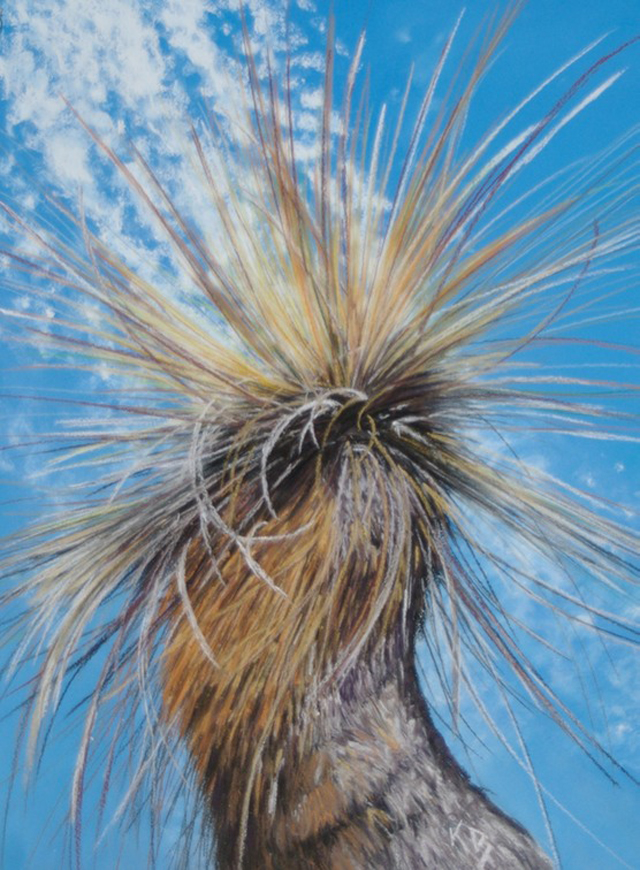
Kay Bridge – Xanthorhea
Another work “Porky’s”, a picture within a picture, shows a far away range of hills from the window of a ruined dwelling, an emotive view stressing the isolation and hardship of our forebears and the places they dared to build. Goyder’s Line comes to mind, an important consideration when exploring our beautiful and tragic Mid North landscape.
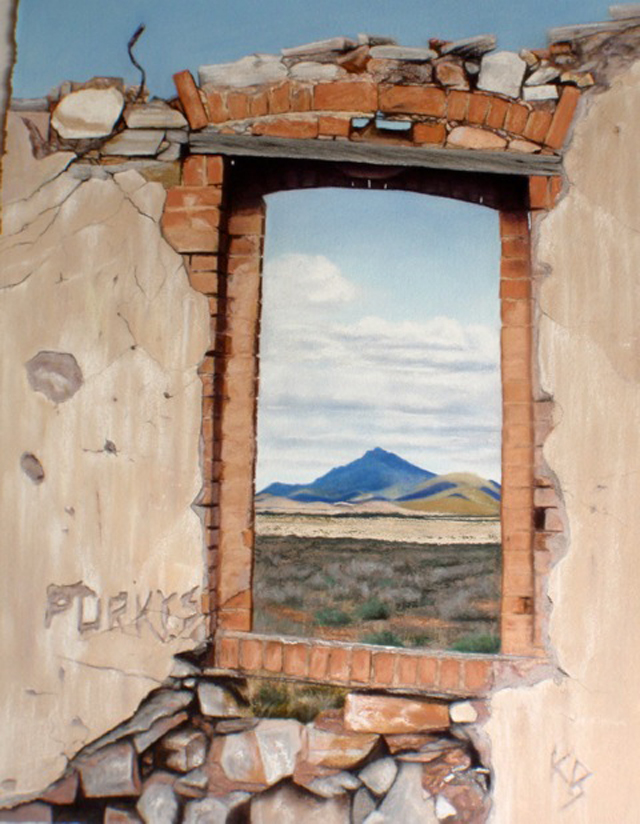
Kay Bridge – Porky’s
On the subject of the Gilbert River in flood, Timothy Dell’s three works at the far end of the Main Gallery invite and welcome visitors into the space with vibrancy and freshness.
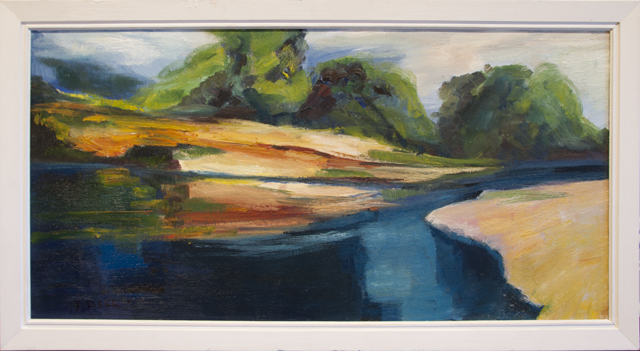
Timothy Dell – Gilbert River in Flood
Simplicity of colour and strength of form give these works a presence in the room, the hand of the artist evident in the brush strokes, in complete accord with the breadth of the subject matter. The recent floods of Mid North creeks and rivers are depicted in these paintings – proving that beauty can be found in nature’s destructive elements.
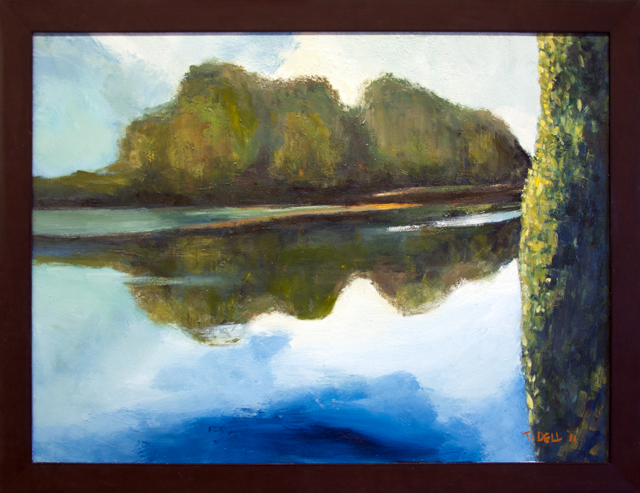
Timothy Dell
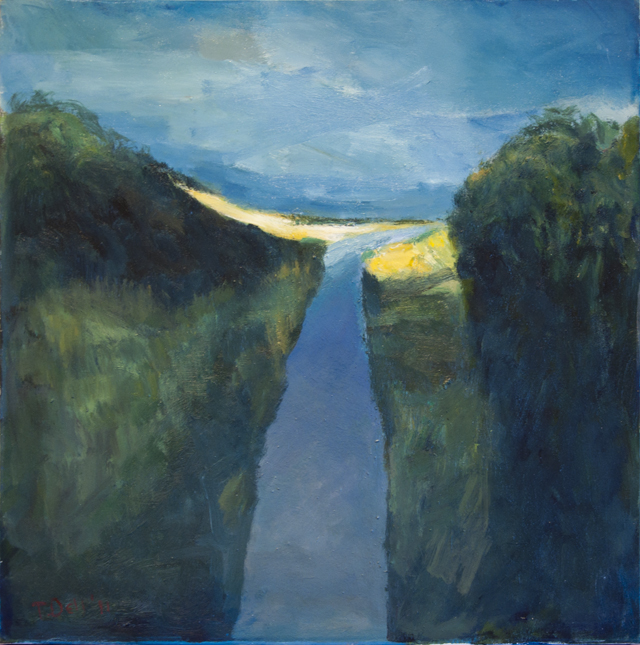
Timothy Dell
Dark romantic views of the archetypal Australian landscape by Gawler artist Julie Hayes, with soft focus introspective imagery, depict places to visit in the imagination, not in a 4X4. The mystery of these small works is realised in their intimate sentience, rewarding time spent in contemplation. Small works have many other advantages too – they can say a lot in a limited space, by simplifying colour and contrast, and by not affording a detailed analysis of the subject matter.
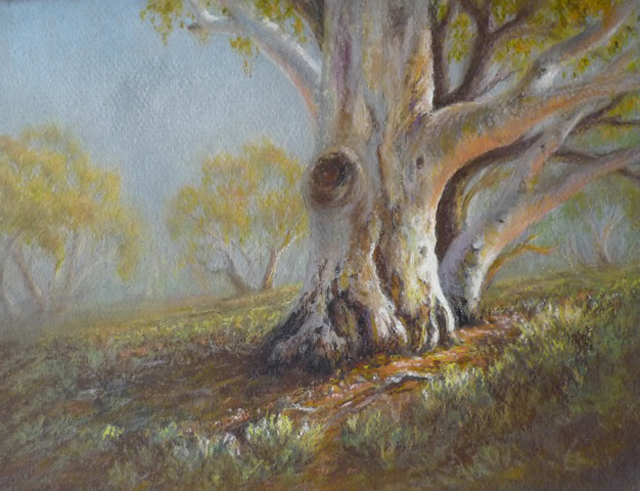
Julie Hayes – Flinders Gum
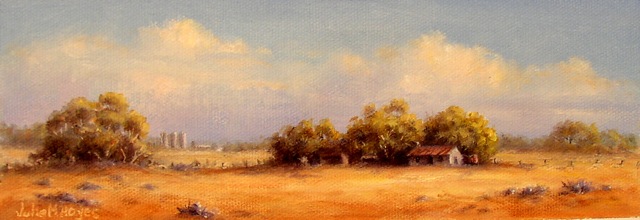
Julie Hayes – Mid North Farm
Clare artist Chris Always’ watercolour expressions are graphically carried out in linear colour and spontaneous gesture. These meditative paintings, like documents, record processes of thought and meaning, suggesting access to a universal “way through”, a portal to life’s deeper mystery, at one with the cosmos. On another level they chronicle a distinct place and time, and are firmly embedded in the artist’s experience, generously offered to the viewer.
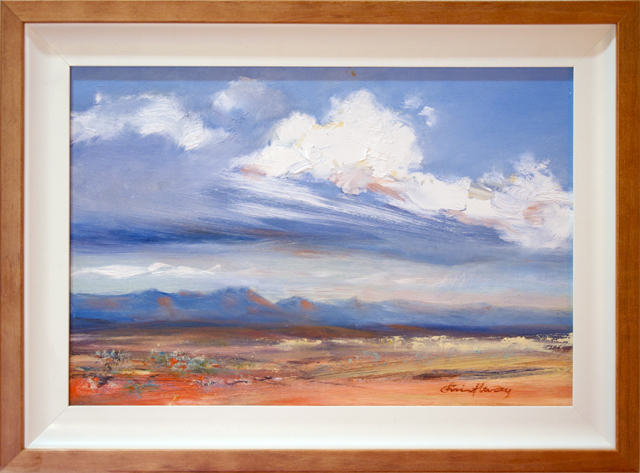
Chris Alway
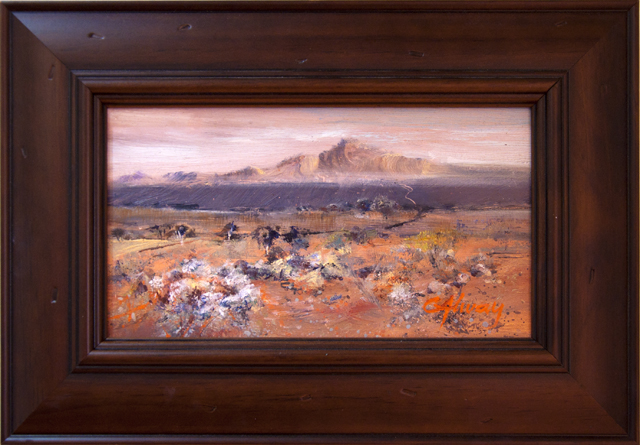
Chris Alway
Bud Stephenson, of Black Springs near Orroroo, in an intimate wall and corner of the Annex, shows work with distinctive character and emotional contrast rendered in colour and tone – orange to ultramarine – the colours of heat and compression.
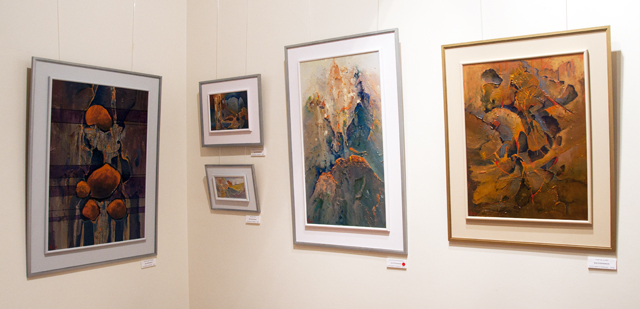
Annex – Bud Stephenson
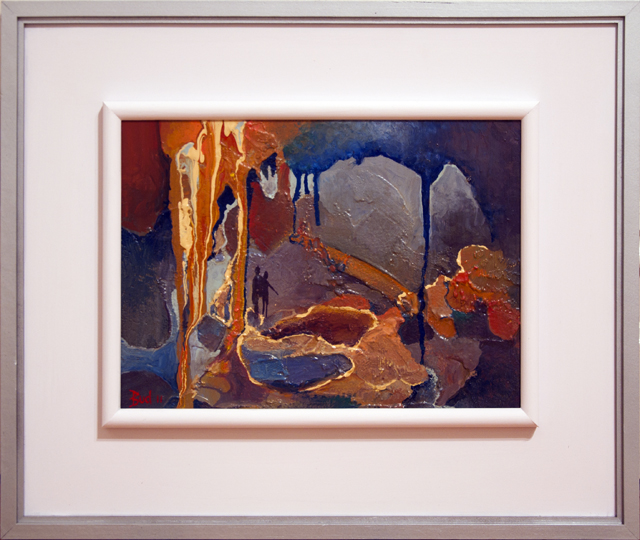
Bud Stephenson
These abstract works visually suggest the mineral constituents of land and organic forms. They surprise the viewer at the same time with unexpected conceptual interpretations of landscape, presented in a manner provoking sympathy and response.
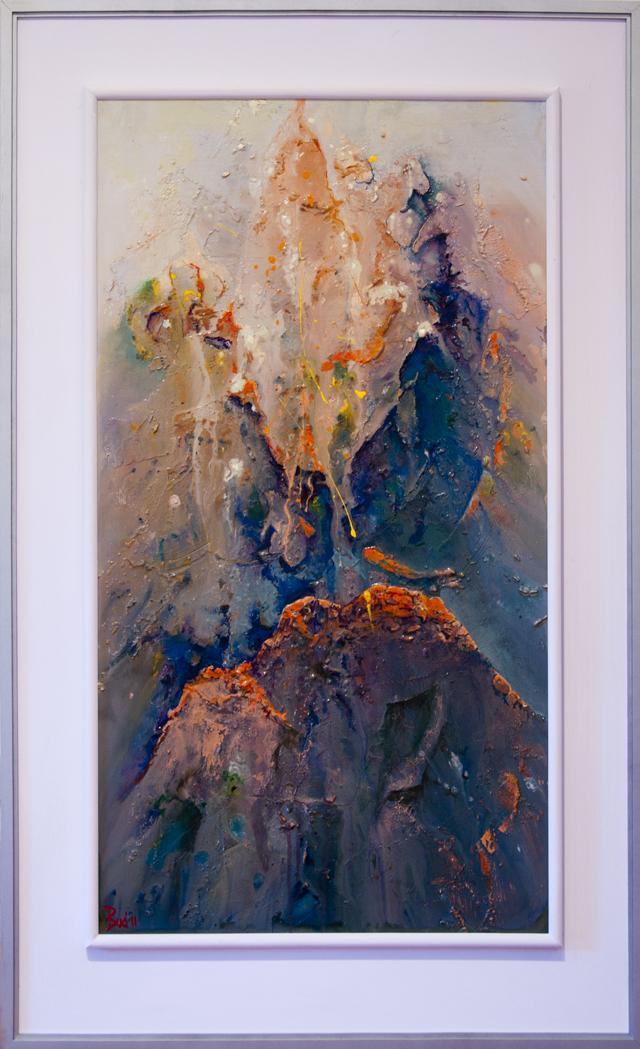
Bud Stephenson
The wall of works by Clare artist Harry Sherwin, in BRAG’s Bence Room, contains four small paintings, including the gem-like watercolour “Towards Evening, Walker Flat Ferry” and the two masterly long narrow Swanreach oils.
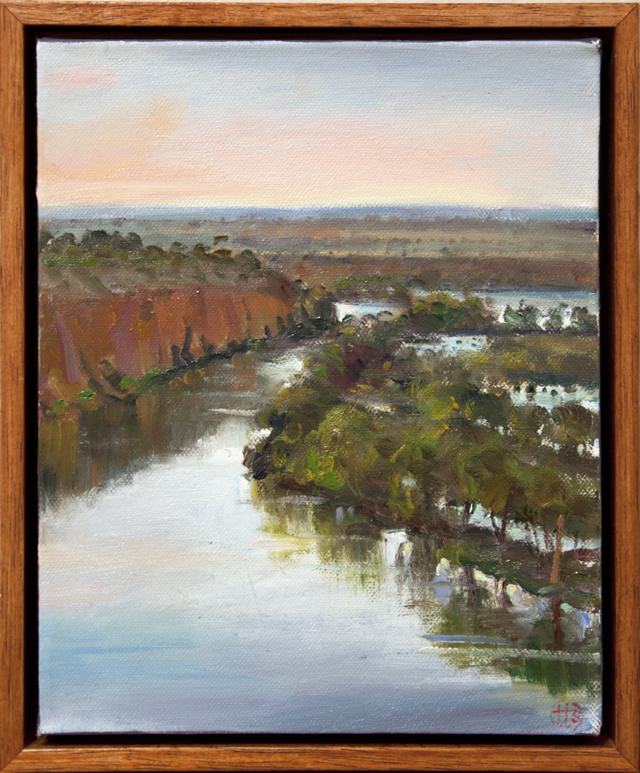
Harry Sherwin
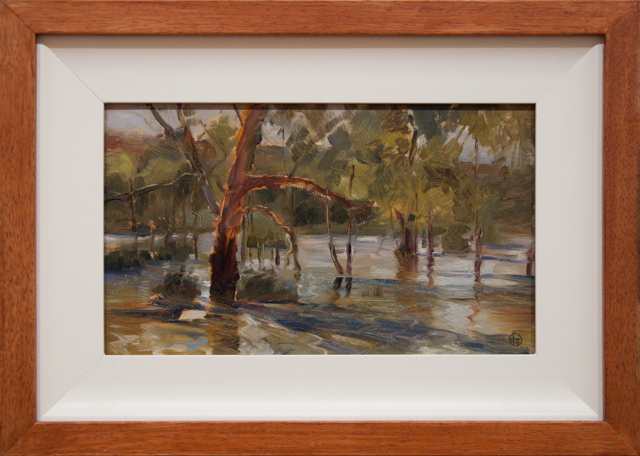
Harry Sherwin

Harry Sherwin

Harry Sherwin
These works depict the Murray River, viewed perhaps from a bird hide. The works are solid and unpretentious, with a grave presence befitting our mighty river. Yet the works show a river with its habitats intact, and against our intuition, no threat visible. Consoled by its beauty we know we must work hard to preserve it.
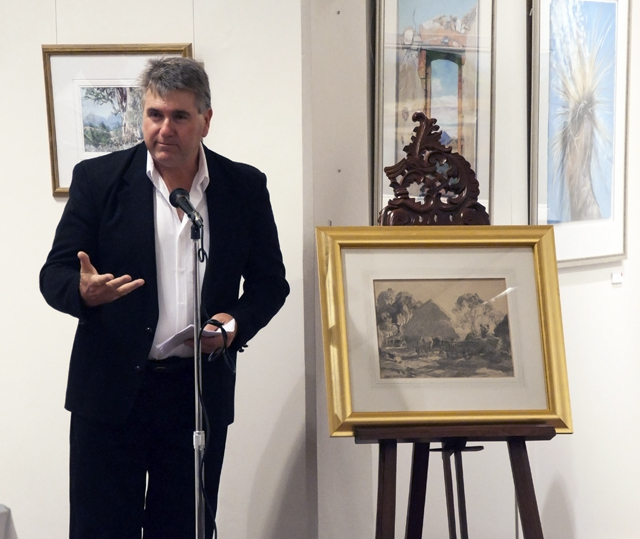
Guest speaker: Ian Falkenberg, District Ranger to the Mid North District
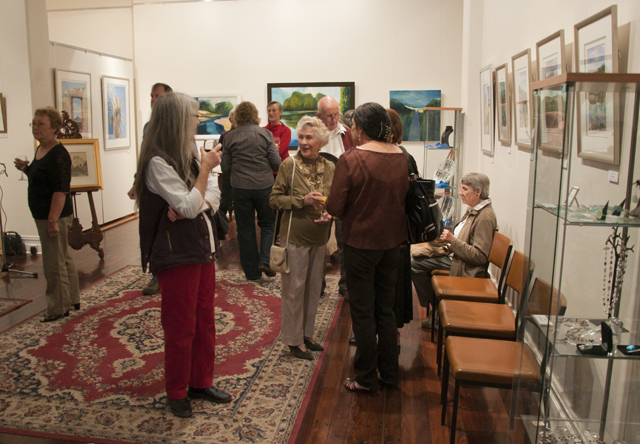
Main Gallery
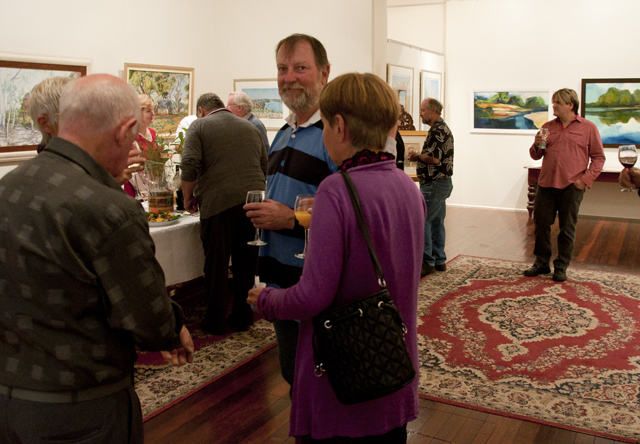
Main Gallery
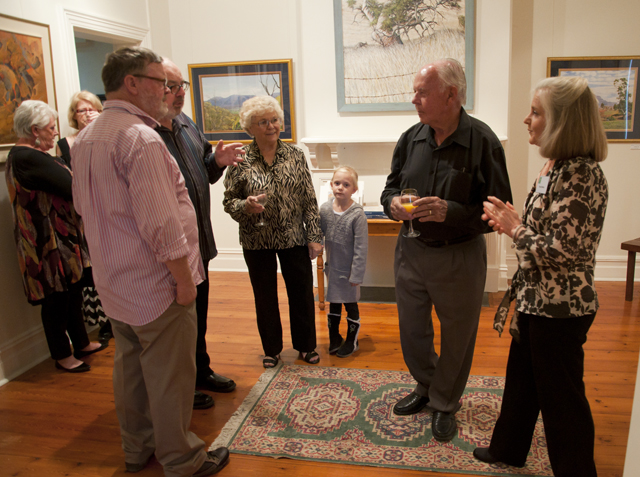
A lively discussion in the Annex
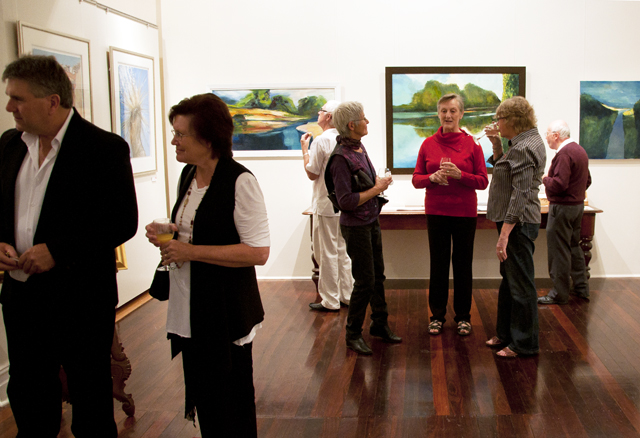
Main Gallery
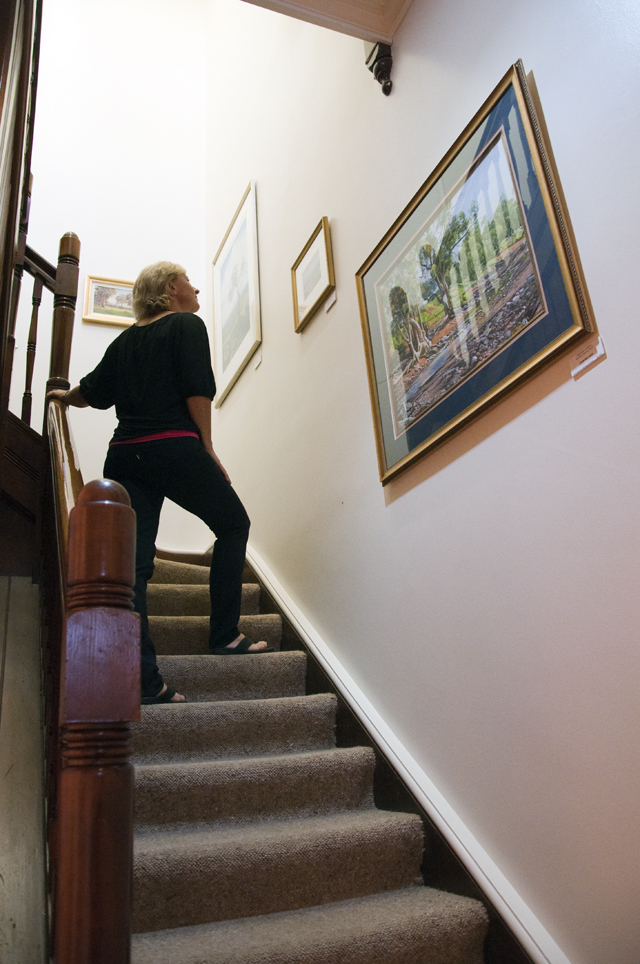
Girl upon the stair
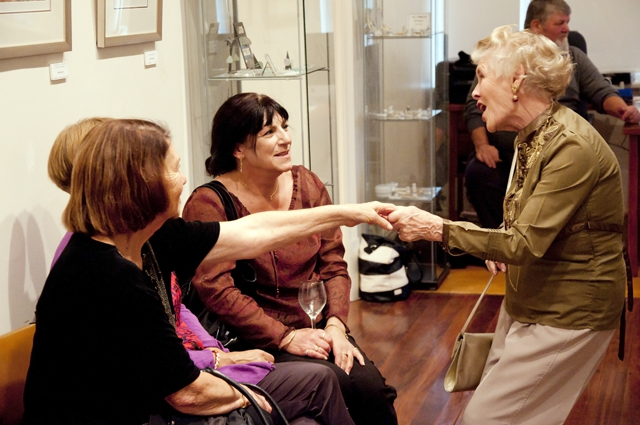
The night ends on a high note
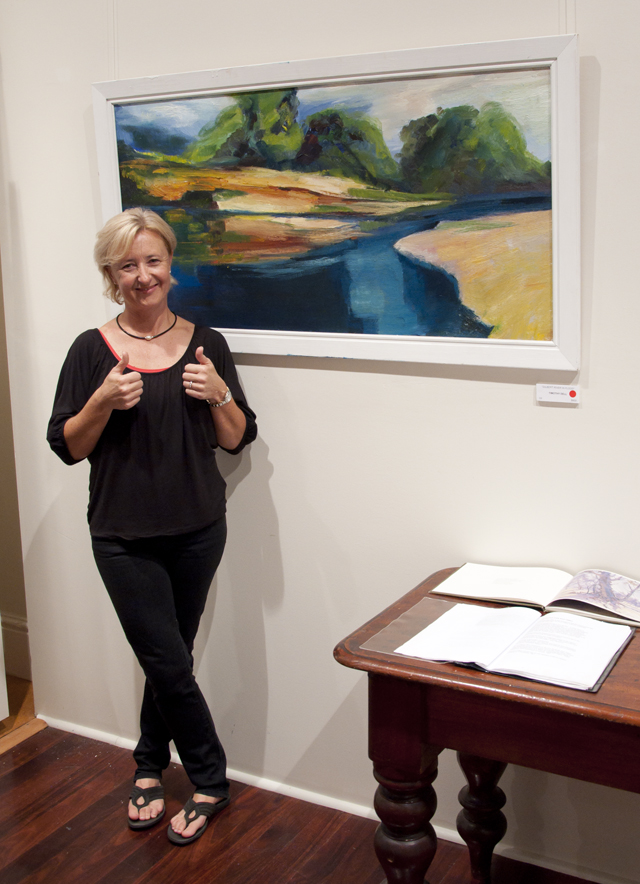
Megan – Happy buyer of Tim Dell’s – Gilbert River in Flood
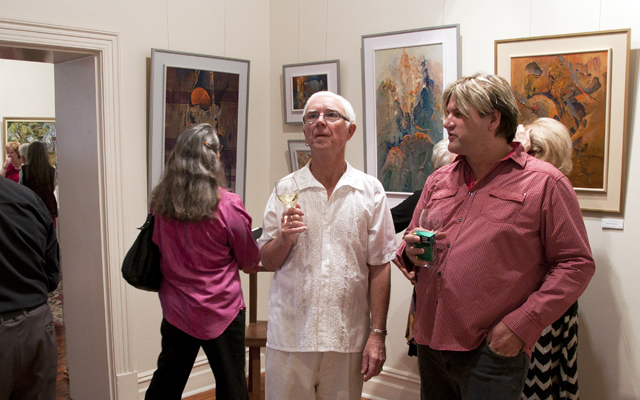
Annex

Bence Room with Porcelain by Val de Vries
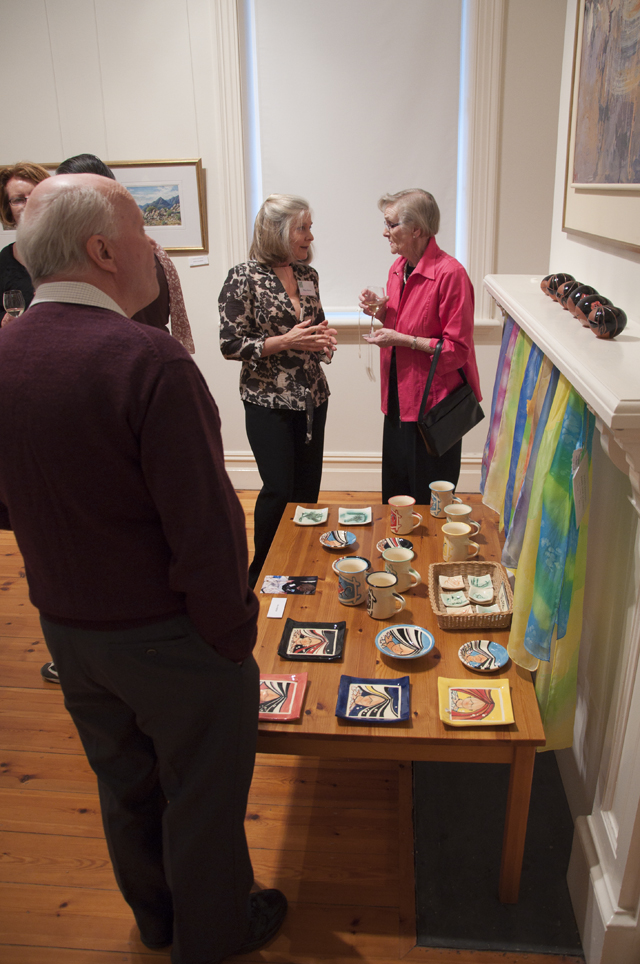
Bence Room – work by Jill Foster and Nan Annels
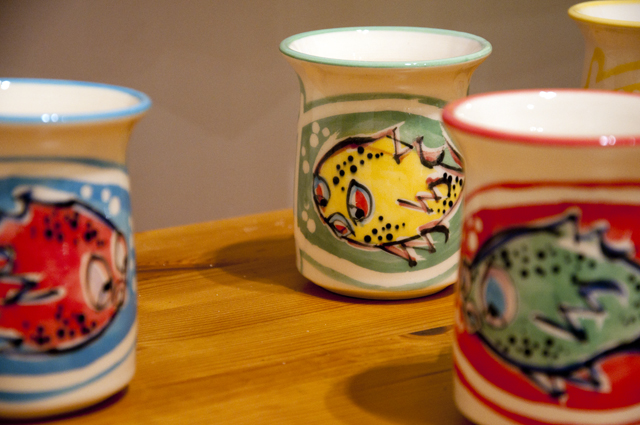
New work by Jill Foster
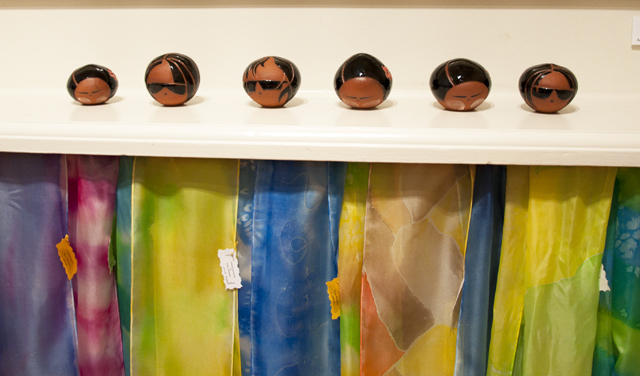
Terracotta by Jill Foster, Silk Scarves by Nan Annels
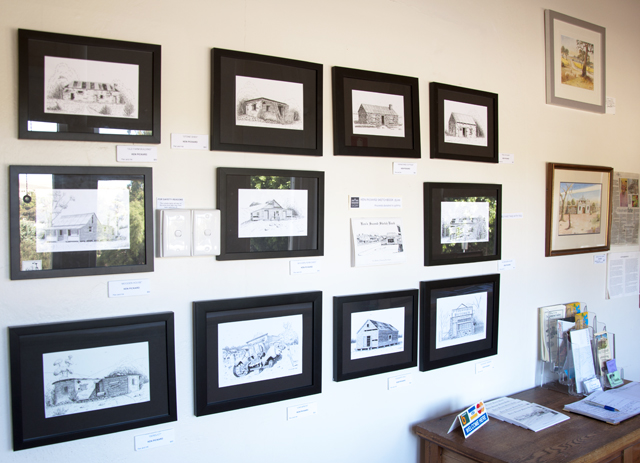
Entrance with pen drawings by Ken Pickard and donated Len Bence Watercolours
Ken Pickard is very generously donating proceeds of his pen drawings and sketch books to the gallery. Len Bence also regularly donates his fabulous watercolours with all proceeds going to the running of the gallery.